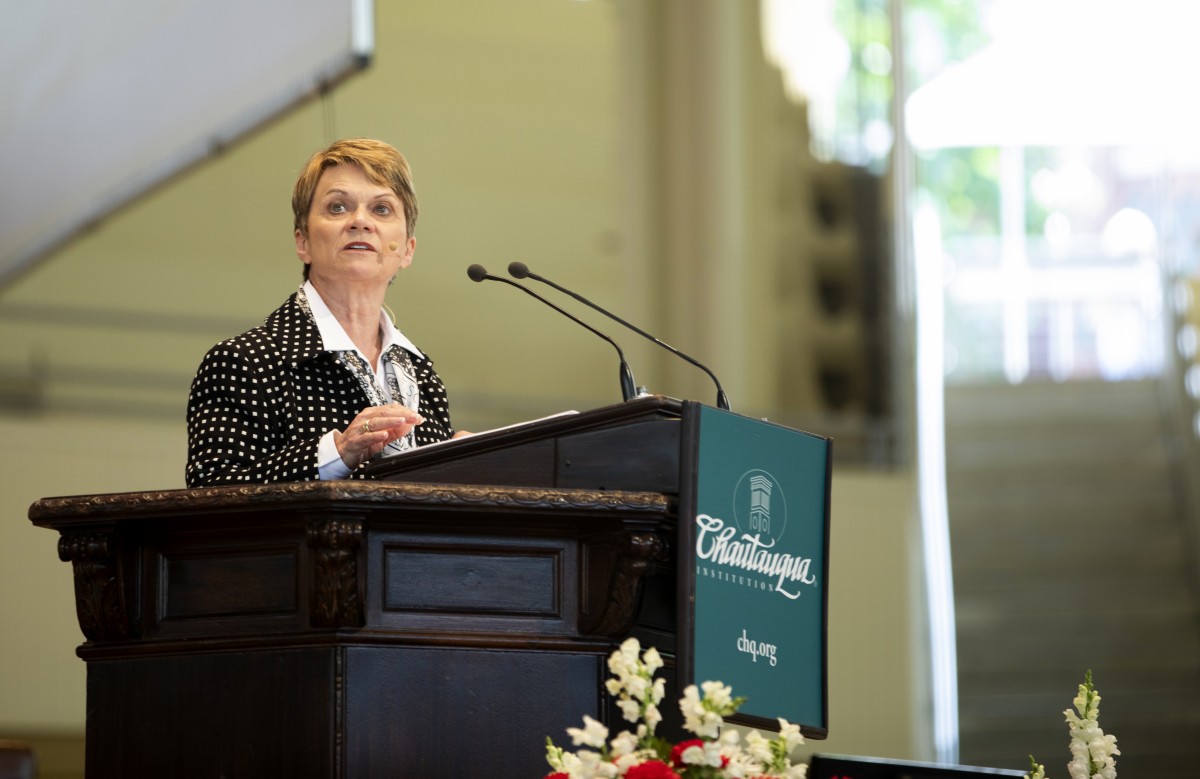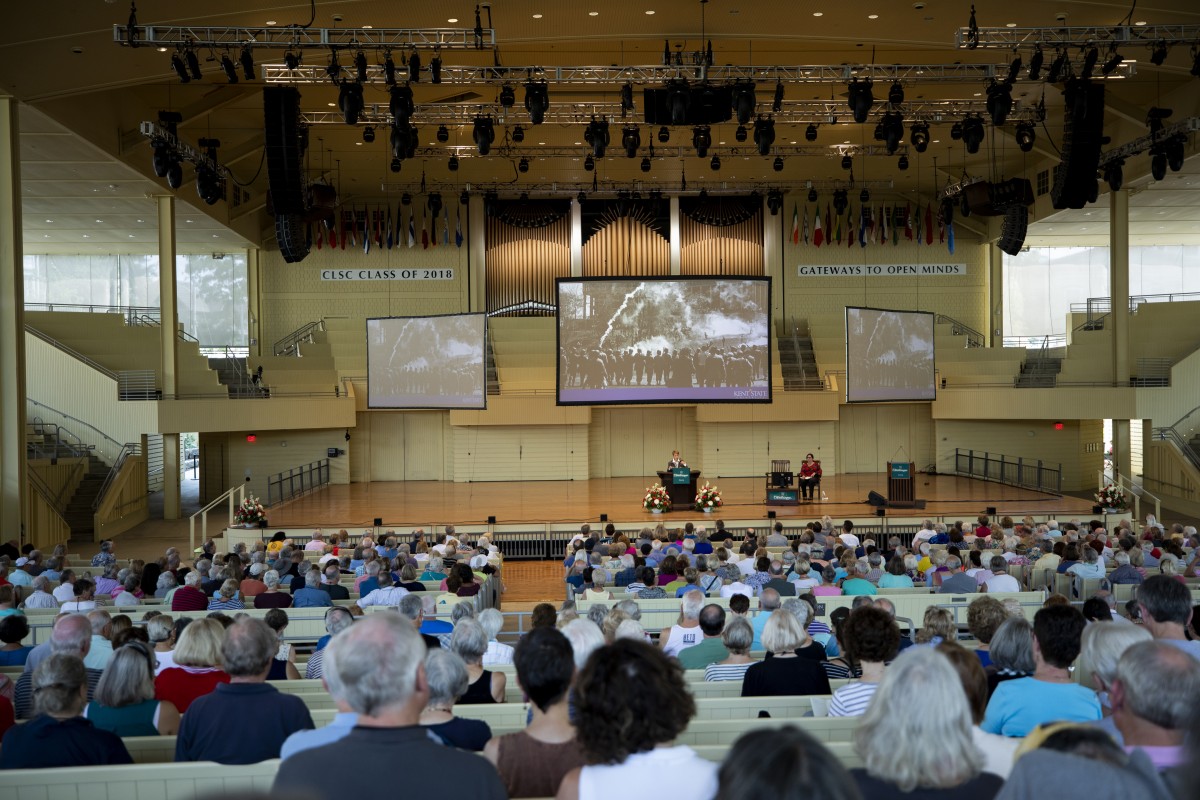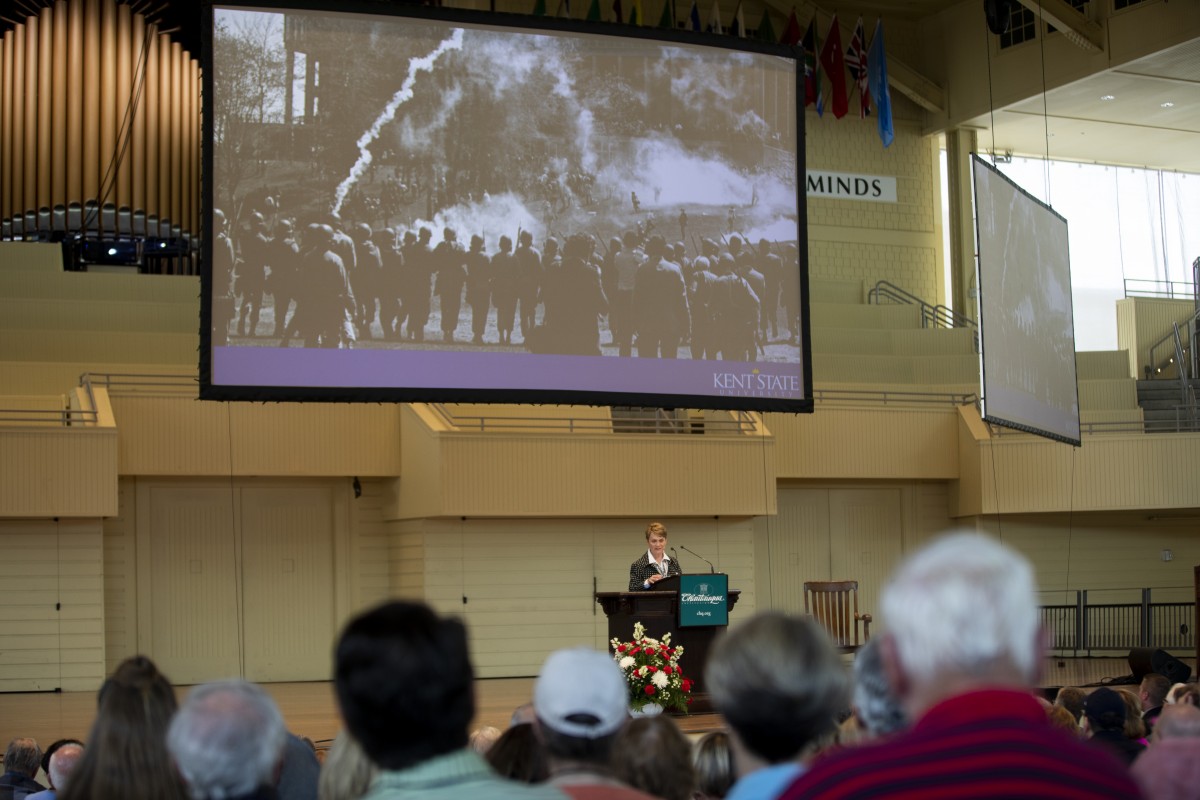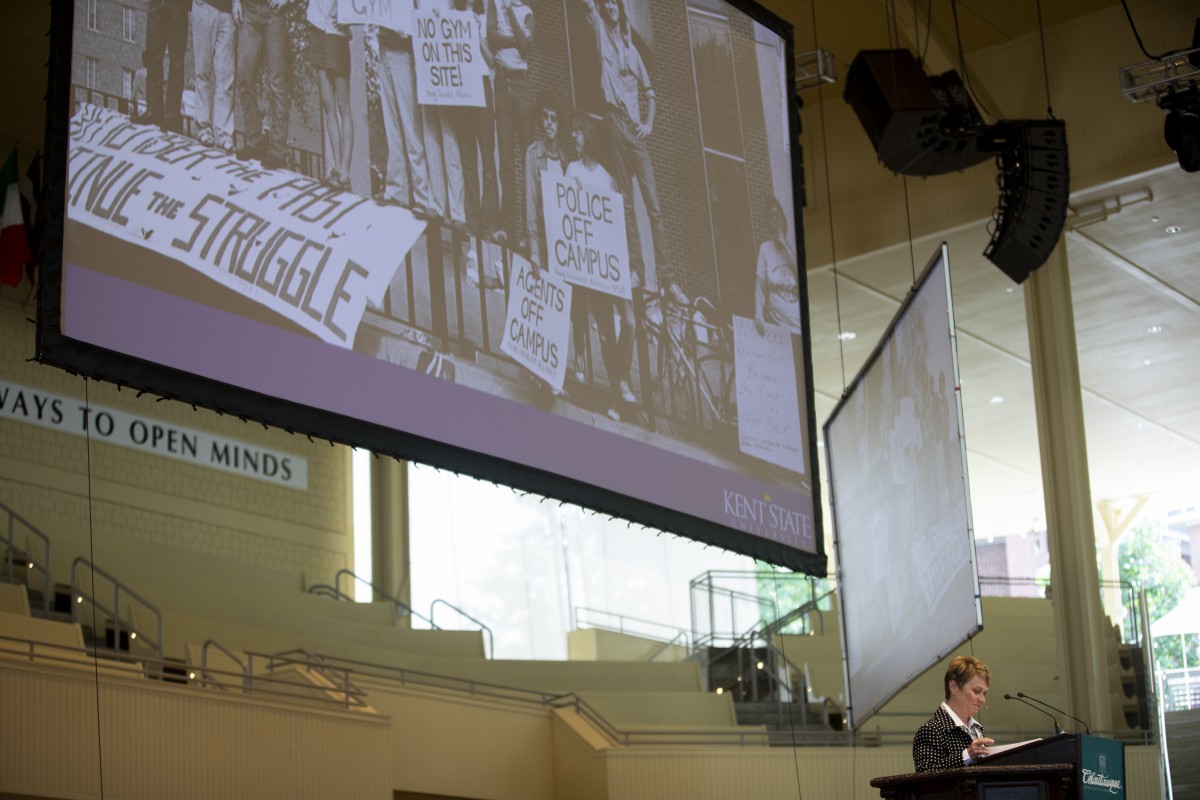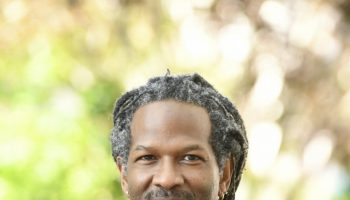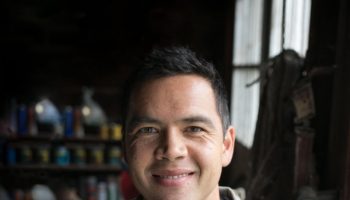Kent State University is a “wounded healer,” said President Beverly J. Warren.
Warren discussed the remembering, reflecting and redefining of the May 4, 1970, shootings at her 10:45 a.m. morning lecture Wed., Aug. 15, in the Amphitheater, marking the first time a Kent State president has publicly addressed the tragedy outside of Kent’s campus.
Kent State University is located in Kent, Ohio, in the northeastern corner of the state. With more than 39,000 enrolled students across its main and seven satellite locations, Kent State is highly ranked in the Best National Universities by U.S. News & World Report. Warren has served as president since 2014.
Her lecture, titled, “Kent State Beyond the Shootings: Journey of the Wounded Healer” continued Week Eight’s theme, “The Forgotten: History and Memory in the 21st Century.”
“Like the students we lost, Kent State suffered a terrible, indelible wound,” Warren said. “Since 1970, we have seen every emotion on the spectrum, from rage and despair to, perhaps unaccountably, serenity. Frankly, we have not always honored all those honest reactions. We have seen the impulse to erase history, to move along. We have seen the high price of remaining chained forever to one terrible minute.”
Warren recounted the events of May 4, 1970, through the experience of then-freshman Dean Kahler, whose curiosity about the anti-Vietnam War rallies led to a life of consequence.
National attention turned to college campuses across the country on May 1, 1970, when protests erupted in reaction to the United State’s sudden invasion of Cambodia. Kent State at first experienced mild, peaceful protests, Warren said, but May 1 ended in vandalism, and by May 2, the ROTC building was set ablaze. By then, Ohio Gov. Jim Rhodes mobilized 850 members of the Ohio National Guard, vowing to restore law and order to Kent State’s campus by “any means necessary.” By the morning of May 4, the protesters numbered in the hundreds, Warren said.
“There was tension,” she said. “Rocks were thrown; tear gas canisters were fired, picked up by protesters and thrown back. There was angry shouting. And around noon, it was time for the change of classes, and many more students came out (to) the Commons — perhaps 1,500 more. Some were curious to just see what was happening on their campus, many were merely passing by or heading for lunch. Dean Kahler would remember thinking, ‘I expected a bigger protest.’ ”
At 12:24 p.m., 67 gunshots pierced the Commons, killing four students: Allison Krause, Jeffrey Miller, William Schroeder and Sandra Lee Scheuer. Kahler was 300 feet from the National Guard, Warren said. He was among nine wounded, shot in the lower back. Now paralyzed from the waist down, his steps toward the Commons that day would be his last.
The year 2020 marks the 50th anniversary of the Kent State shootings, and while Warren’s institution is working to remember, it is also looking to move forward — “(stewarding) the story of May 4, 1970, for a new century as a moment in time and a call to action,” beginning with examining individuals’ relationship to the event.
This starts with the question, “Where were you?” she said. Although Warren remembers hearing about the Kent State shooting as a senior at the University of North Carolina at Greensboro, the majority of its current student body wasn’t born during Vietnam, and it is likely their parents might not remember the 1970s. By 2045 — the 75th anniversary of the shootings — most of the baby boomers will have died, along with their memories of the late 20th century.
“As the date recedes into history and the events grow less vivid in our communal memory, we have to do more than ask ‘Where were you?’ ” Warren said. “If we don’t do more, we risk allowing May 4 to become one more dusty, abstract date in history. We are determined to avoid that. We have to keep it relevant, make it mean more, put our wound to work.”
However, Warren’s mission to “remember and renew” the lessons of May 4 was not the charge of her predecessors; following the massacre, the Kent community grappled with emotional, physical and financial pain. In 1975, President Glenn Olds motioned to end official commemorations but, Warren said, no one forgot the “the drumming, four dead in Ohio,” — a Crosby, Stills, Nash & Young refrain, which cut through America that summer.
This was the genesis of the “May 4th Task Force,” a group that took over the job of remembering; their efforts continue to this day with an annual candlelight vigil at the site of the shootings after walking the demonstrators’ path. The university also created the May 4 Visitors Center devoted to the history and impact of the shootings, as well as commemorating the site of the protest as a historic landmark.
Such efforts pay off in two “insights,” Warren said.
The first: information surrounding the Kent State shootings is incomplete, despite fierce or conscientious remembrance; Warren acknowledged the narrative is messy, with dozens of conflicting accounts, gray areas and no conclusion of who ordered the gunfire.
The second: the wound is not yet healed — an open wound for victims, families, the community and the campus, in part because of the messy narrative and lack of closure. Kent State’s reflection and pain is relevant in the current political climate, Warren said.
“One way to view the shootings is as a terrible product of missed signals and failed communication,” she said. “That doubles as a fair description of the environment we find ourselves in today, where our leaders talk past one another, … outrage is the norm, insults and mockery blow away civility and respect. As we learn to live with the wound of May 4, 1970, we at Kent State strive for different values.”
Examples of Kent State’s values, Warren said, include its School of Peace and Conflict Studies; a recent Second Amendment protest where students brought guns on campus and engaged in peaceful discussions with students, faculty and the community; and its Wick Poetry Center, whose Traveling Stanzas exhibit is in residence at Chautauqua Institution.
Warren encouraged the audience to reflect on the Kent State shooting through the Poetry Makerspace located in the Colonnade.
But after reflection, how does Kent State move forward to “renewal”?
Warren hopes May 4, 2020, will be a day of renewal for the campus and the country through Kent State’s plan to distribute interactive mobile museum installations, as well as middle and high school teaching materials that “honor the past and renew the future.”
Kahler is a man renewed, she said. After being shot in the back and losing the ability to walk, Kahler was grateful to be alive. He finished his degree, pursued a life in politics and was elected to public office, where he lobbied for wheelchair accessibility. His — and the energy of survivors who found strength in the atrocity — is the energy Warren wants to grow from May 4, 1970, and continue through generations of students.
Quoting Mary Oliver’s “The Summer Day,” she said: “Doesn’t everything die at last, and too soon? Tell me, what is it you plan to do with your one wild and precious life?”
“We choose to remember, reflect and renew,” Warren said. “We will remember vividly, but not live in the past. We will honor all emotions and perspectives that forever will resound around us, but be consumed no more by grief or anger. And we will raise our voices using lessons of May 4, 50 years ago, to convene people, heal conflict and create a more inclusive and more peaceful future. If we do that, we and Kent State will be transformed. So that then is our plan for using our history and making it forever meaningful and making the most out of our wild and precious lives.”
After the conclusion of Warren’s lecture, Emily Morris, vice president of marketing and communications and chief brand officer, opened the Q-and-A by asking how the relationship between Kent State and the City of Kent has evolved since May 4, 1970.
“It was very hard for the community members of Kent,” Warren said. “Many were resentful at the time, and perhaps rightfully so, but what has happened over time is we have tried to bring down fences and the differences that divide us, and we’ve really worked to develop a partnership that shows that we are better together than we would be as separate and isolated institutions.”
Morris then asked how the National Guard’s voices are represented in Kent’s history, specifically the May 4 Visitors Center.
“I think what we’ve tried to do with the May 4 Visitors Center and with our language and our actions, we’ve tried to have all voices heard,” Warren said. “As I said, guardsmen cannot be painted in the same stroke any more than the Kent State students and protesters can be painted with a general stroke. And so it’s a complex matter of dealing with both sides and perspectives and trying to honor them.”


